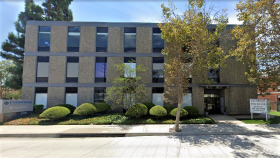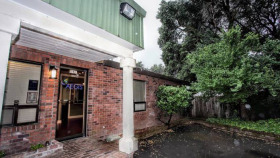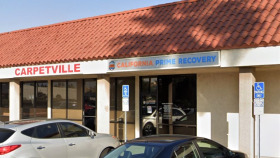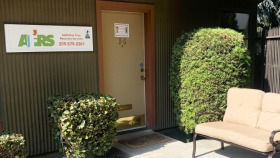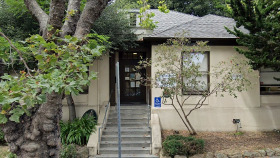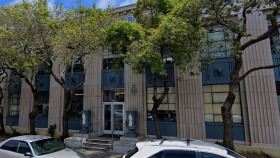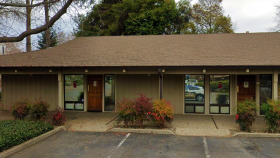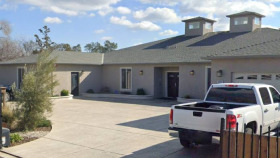Expert Insights
Working as a counselor in a low income California community, I witnessed firsthand the intertwined challenges of substance use disorder and mental health disorders. Many of my clients faced the overwhelming prospect of managing both issues simultaneously.
My clients often had little to no access to the integrated care they desperately needed. This lack of coordination between healthcare providers exacerbated their struggles. The inaccessibility of consistent, affordable and high quality care left them feeling abandoned and without hope.
Per the California Department of Health Care Services, in the 2023/24 fiscal year, California assessed 174,776 individuals for co-occurring mental health and substance use disorders. This number underscores the pressing need for more comprehensive and accessible treatment statewide.
~ Elizabeth Austen
How Much Does Drug Rehab Cost in California?
California is ranked 23rd nationwide in terms of addiction treatment affordability, with an average cost of drug rehab of $56,654.
- Medical detox is the most expensive, with an average cost of $139,673
- Inpatient rehab in California costs an average of $49,994
- Outpatient rehab in California costs and average of $8,307
- Outpatient methadone treatment is the most affordable, with an average cost of $7,381
Keep in mind these costs are averages for all types of addiction treatment, including medically supervised detox and residential inpatient rehab, both of which drive up the averages. These numbers also reflect the full cost of drug rehab without any insurance coverage. Most patients can expect to pay far less than these average for more typical outpatient treatment, MAT, and therapy.
Cost of Drug Rehab in California Compared to Nearby States
Here is how much addiction treatment costs in California vs nearby states like Oregon, Nevada, and Arizona.
The cost of alcohol and drug rehab in California can depend on various factors, including:
- Treatment setting (inpatient vs. outpatient)
- Location of treatment center
- Funding
- Insurance
- Amenities and features
- Time in treatment (30 to 90 days or longer)
Typically, inpatient rehab or residential rehab costs more than outpatient services because you pay to reside at the facility. Drug rehab programs that are classified as “executive” or “luxury treatment center” are costlier to patients.
However, treatment costs should not prevent your access to care. California offers several free and low-cost rehab treatment options that provide sliding-scale fees based on your current financial standing. If you have health insurance, whether it is private or public, several facilities will accept your insurance and provide at least partial coverage, depending on your provider or plan.
California adults who previously avoided rehabilitation care due to cost decreased 28% from 11.9% to 8.6% between 2019 and 2020.
How to Pay for Drug Rehab in California
As of 2024, there were over 2700 drug rehab facilities across the state of California. These facilities accept several payment methods. Of those treatment facilities, the following numbers reflect how many accept their respective payment methods:
Free Rehabs in California
There are many options for low-cost or free addiction rehab in California. If you’re seeking alcohol or drug rehab and have limited resources, there are facilities that accept Medicaid, state funding, or federal block grant funding as payment options. Many centers also offer a sliding scale fee structure.
You can sometimes access funding through nonprofit organizations, faith-based groups, and groups serving special populations and underserved individuals, such as LGBTQ and other advocacy groups, military and veteran’s organizations, and tribal or indigenous populations groups. The section below provides suggestions for finding such funding. When you’re considering low-cost or free substance abuse rehab options, look for facilities that feature evidenced-based treatments as well as affordability.
Major Private Insurance Carriers in California:
- Aetna Healthcare
- Anthem Blue Cross
- Anthem Blue Cross Californiacare
- Blue Shield of California
- Chinese Community Health Plan (CCHP)
- Cigna
- Gold Coast Health Plan
- Health Net of California, Inc.
- Inland Empire Health Plan
- Kaiser Permanente
- L.A. Care Health Plan
- Molina Healthcare of California
- Oscar Health
- Sharp Health Plan
- Sutter Health
- UnitedHealthcare
- Valley Health Plan
- Western Health Advantage
Medicaid / MediCal
Medi-Cal is the Medicaid-approved healthcare program in California. Medi-Cal offers addiction and substance abuse treatment through a state-certified program called Drug Medi-Cal. Most California counties participate in this program and use the Drug Medi-Cal Organization Delivery System (DMC-ODS). Substance abuse services offered through this program include detox, medication assisted treatment (MAT), crisis care, drug rehab, and aftercare services.
Rehab facilities offer a variety of options, including inpatient and residential treatment, outpatient (intensive outpatient and regular outpatient), 12 Step and faith-based programs, gender-specific programs, Spanish-speaking programs, LGBTQ+ programs, and programs for pregnant women. You would need to check with your insurance provider to determine which options are available to you.
Medicare and Medicare Advantage
Medicare and Medicare Advantage plans in California cover mental health and substance abuse treatment, such as detox, MAT, inpatient/residential care, outpatient treatment (partial hospitalization programs [PHPs], intensive outpatient programs [IOPs], and regular outpatient visits), individual, group, and family counseling, psychiatric evaluations, diagnostic testing, and medication management.
Options vary according to specific policies, so you should always check with your provider to confirm your coverage. Many policies will have limits to the number of inpatient days they pay for, as well as other restrictions. Deductibles and copays may be required.
Military Insurance
Insurances that are available to current military and military veterans include TRICARE insurance and Department of Veterans Affairs (VA) benefits. TRICARE covers medically-necessary substance abuse treatment, including residential/inpatient care, opioid treatment programs with detox and MAT, and outpatient treatment: PHPs, IOPs, and regular outpatient visits. Policies vary in the types of treatment services offered. There are limits on certain services, and not all services are offered at every facility.
VA addiction treatment benefits for military veterans in California are offered through the VA’s Substance Use Disorder (SUD) program. This program covers inpatient, outpatient, and opioid treatment services. Services vary according to the VA facility accessed. You can find a list of California VA clinics that have SUD programs online.
Tribal and Indigenous Peoples’ Programs
Indian Health Services (IHS)
California Area Indian Health Service works with the national Indian Health Services (IHS) to provide evidence-based and culturally appropriate substance abuse services to members of American Indian and Alaska Native tribes living in California. They offer services including mental health assessments, residential/inpatient care, outpatient treatment with individual, group, and family counseling, 12 Step group facilitation, and skills and vocational training. Transitional housing is available in some areas. Services vary according to location and the tribal programs available. You may need to provide a tribal enrollment card to access services. A list of residential substance abuse treatment programs is available on the state’s webpage.
Outpatient treatment is offered at IHS California clinics. A list of California health programs and clinics is also available on the state’s webpage.
Tribal MAT (Medication assisted Treatment) Program
The Tribal MAT program provides FDA-approved medications and detox services to tribal Indian communities in California. It also provides cultural activities and addiction counseling They’re funded by a State Opioid Response (SOR) grant, and have partnerships with other California organizations, including the California Indian Opioid Safety Coalition.
Other Low-Cost Options
Financial Assistance
You might be able to finance drug rehab by acquiring a loan, such as a bank loan, or a loan from a family member or friend. Or, you might also try to raise funds through a social media platform such as GoFundMe. Finally, if you’re a member of a group that often faces discrimination (e.g., LGBTQ+, racial, or cultural minorities), an advocacy group dedicated to your population may offer scholarships or other financial assistance to help you pay for treatment.
Sliding Scale Payments
Many rehab facilities offer lowered payments for individuals who would otherwise have trouble paying for treatment at the facility, regardless of whether they have insurance coverage. These fee reductions are often based on the income of the individual. If your income is below the federal poverty level, you might qualify to receive the maximum fee reduction offered by the facility. Since drug rehab costs vary greatly, depending on the type of facility (e.g., luxury vs. state-funded), the sliding fee scale discount would reduce the cost of treatment, but it would not necessarily make specific addiction treatment centers affordable to you.
Family Medical Leave Act (FMLA)
This 1993 law helps employees maintain job security while accessing mental health care, including receiving addiction treatment. FMLA allows you to take up to 12 weeks of unpaid leave within a 12-month period, without losing your job. Your employer must also maintain your health insurance coverage during this period.
Substance Abuse and Mental Health Services Administration (SAMHSA) Block Grants
The Substance Abuse and Mental Health Services Administration is an agency within the U.S. Department of Health and Human Services. They distribute funds in the form of grants to all 50 states. These funds are used by local government and non-governmental organizations to assist community mental health centers in providing services, including crisis mental health services, outpatient treatment, and inpatient/residential addiction treatment programs. Ask about the availability of SAMHSA grants at the rehab facilities you are considering.
Resources
- America’s Health Rankings analysis of CDC, Behavioral Risk Factor Surveillance System, United Health Foundation. (2021). Trend: Excessive Drinking, California, United States.
- America’s Health Rankings analysis of CDC, Behavioral Risk Factor Surveillance System, United Health Foundation. (2021). Trend: Non-Medical Drug Use, California, United States.
- Substance Abuse and Mental Health Services Administration, Center for Behavioral Health Statistics and Quality. (2019). Treatment Episode Data Set (TEDS): 2009-2019..
- U.S. National Library of Medicine. (2021). Dual diagnosis, MedlinePlus.
- California VA Directory. https://www.va.gov/directory/guide/state_SUD.cfm?STATE=CA
- IHS Clinics in California. https://www.ihs.gov/california/index.cfm/health-programs/adult-substance-use-disorder/














